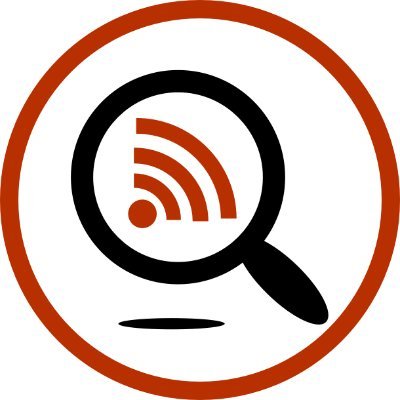Have you ever made it to the end of the week only to look back and feel like nothing important was accomplished? Me too. In the fast-paced world of business, it can be easy to get distracted by putting out fires and solving unanticipated issues rapidly.
Unfortunately, running your business in reaction mode will hinder your growth. If this sounds familiar, don’t get discouraged. In today’s episode: EOS® Measurables and how they can help you and your team stay focused on – and accountable to – the most important aspects of your business.
At a high level, measurables are the fuel that ignites performance and propels organizations forward. They’re weekly, activity-based numbers that let you know your business is on track and making progress toward long-term plans. These might include sales calls, net promoter scores, utilization, or any number of things.
The point is that you’re tracking what must happen each week, no matter what else comes up. Business is unpredictable, remember? Each Measurable also has someone who’s accountable for keeping it on track, meaning it’s in line with the goal you’ve set and it lines up with that person’s seat on The Accountability Chart™.
So if your Measurable goal is 20 sales calls per week, the individual has to hit or exceed those 20 calls. As you can see, Measurables drive accountability through your organization because employees are clear on expectations and how they’re doing. Over time, every person in the organization will be accountable for a Mmeasurable that aligns with their role and responsibilities.
Imagine no longer needing to ask around for frequent status updates. Just look to see if the measurables are on track. In EOS, we like to say that what gets measured gets done. Just like a sports team relies on individual player statistics to gauge performance, Measurables provide insights into individual and team contributions.
Your Measurables show progress status each week and enable data-driven decision-making to grow your business. If you’re thinking, “OK, this sounds great, but how do I identify the right Measurables?” Well, you’re not alone. It will take some iteration, but the best Measurables are weekly, activity-based, leading indicators. If tracked with frequency and consistency, they deliver the results you want and capture the trailing indicators of success. Tracking leading indicators is critical because it allows you time to be proactive should your Measurable fall off track.
If you only track trailing indicators, it’s often too late to fix a problem by the time you identify it. When they’re leading numbers, you get them when they’re issues. They haven’t become problems yet, so you can get in and change a behavior to correct the trend or pattern. For many companies, this is a new way of thinking.
Don’t get discouraged, and adjust as you need to. Think of it this way: If your ultimate goal is to increase sales, a lagging Measurable would be revenue. Instead, use a leading Measurable like calls made, or proposals sent, or RFPs sent, or meetings held. Doing so will allow you to identify how many of those activities have to be completed each week, and that gives visibility to your goal before you see a dip in revenue on your financial report.
When you think about this, I want you to picture yourself in your car. A healthy set of Measurables for any Scorecard would be if you were sitting in the driver’s seat and you looked at how much space in the car certain parts of the car take up. Think about it like this…
Your windshield takes up the maximum amount of space; your dashboard proportionally is smaller than your windshield; and your rearview mirror is smaller still. If you think about your numbers this way, “windshield numbers” are those leading indicators, the ones that would tell you if there’s a curve in the road or a stop sign or things coming that you should hit the brakes for.
Your dashboard is where all those “check engine” lights come on. It’s the stuff that alerts us to right here and right now. And they’re equally important, but they’re a smaller set of numbers. It’s not as many as the leaders because it’s got to be our current state. Our rearview mirror really gives us a view of everything we’ve already moved past.
So it can be much smaller in stature, and it can actually just inform us about where we’ve been, where we can look year over year and turn it into what might be a leading indicator. Please avoid the trap of trying to think yourself to perfect Measurables. You will not get there. Measurables are attached to an Accountability Chart seat, meaning it’s a number that indicates the health of activity within that seat.
They’re tied to your one-year plan and your quarterly goals as far as your metrics go for sales, profit, and whatever your company Measurables might be.
And they also come from your processes. So many people miss the opportunity to look at their processes – once documented – and say what activities within that chain of events leads to the right outcome. You can be measuring how often you’re doing something, the frequency, whether people are doing it, compliance, or the actual outcome itself. When you look at these Measurables, they tie together two other EOS tools: your Accountability Chartand your processes. That way, you aren’t having to hold people to your processes…
You can just read a Scorecard to see whether they are using the process or not. Once your Measurables are defined, you have to use them. You have to list them on your weekly document called the Scorecard and you have to review them every single week during your Level 10 Meeting™. Make sure to drop any Measurable that might be off track two weeks in a row onto your Issues List.
Ideally, your Measurables and your Scorecard give you a pulse on the health of your business. So, if those numbers are read two weeks in a row, you’d better be talking about them, because the health of the company is at stake. During your IDS® time, dive deep, identify the root cause, and take corrective actions to get those Measurables back on track. When they are weekly, activity-based numbers, you should know what to do more or less of. There should be a behavior attached. This information is also useful for identifying business trends and for forecasting. Imagine what insights you’ll find with 52 weeks of data.
Also, please forgive yourself. If you’re like 80% of my clients, you haven’t been measuring anything and you’ve been doing a reasonably good job. You have a successful company that’s thriving and you’re approaching it now saying, “I need better information with a more logical approach because data doesn’t lie.”
It would be like flying an airplane and then adding instruments because you hadn’t been using them. You will do a better job and have a much more effortless flight.
Please be patient when figuring out the right Measurables. You will make iterations, so take three months to a year to get this right and dial in the right numbers that give you a pulse on the health of your business.
Keeping your employees focused on the right actions is part of your role as a leader, and EOS Measurables support you in doing exactly that. Every person’s Measurable connects to the organization’s vision and goals, creating a unified force striving toward success. Embrace the power of Measurables and watch as your organization thrives.











